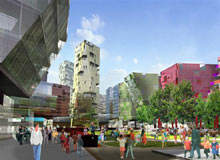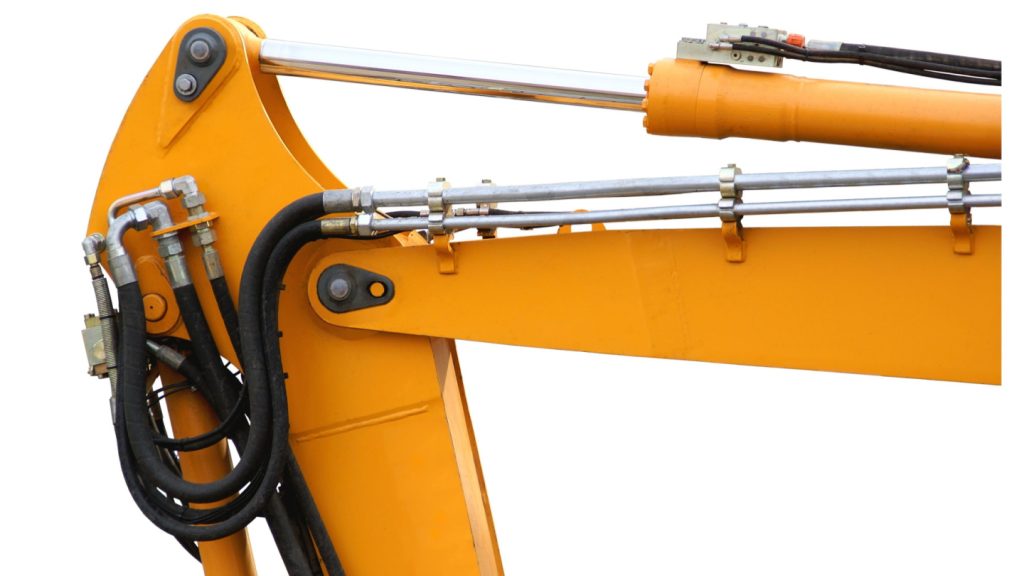
Ken Shuttleworth was renowned for the speed and brilliance of his drawing during nearly 30 years at Foster & Partners, and since forming Make it is hard to keep up with the constant stream of projects that are taking the UK by storm.
The 53-year-old famously sketched out the concept for the GLA building next to London’s Tower Bridge in ten seconds and has been credited for making key contributions to such icons as 30 St Mary Axe (known as the Gherkin) in the City of London, the Commerzbank Tower in Frankfurt and the much-lauded Chek Lap Kok airport in Hong Kong.
‘KEN THE PEN’
Shuttleworth was a key influence in the background at Fosters but is now at the helm of one of Britain’s fastest-growing architectural practices which has reached nearly 100 staff in little more than two years and has major projects about to start on site in London, Birmingham and Nottingham.
The 53-year-old, known in the industry as ‘Ken the Pen’ for his prodigious drawing ability, has a quiet voice and low-key manner and wears an enigmatic half smile which seems to indicate that all is well in his world. And he has a lot to feel content about.
See Also:
Since 2004, Make has grown from two to 97 staff, has opened offices in Birmingham and Edinburgh adding to its HQ in London’s Fitzrovia, and has been involved in more than 200 projects.
How well do you really know your competitors?
Access the most comprehensive Company Profiles on the market, powered by GlobalData. Save hours of research. Gain competitive edge.

Thank you!
Your download email will arrive shortly
Not ready to buy yet? Download a free sample
We are confident about the unique quality of our Company Profiles. However, we want you to make the most beneficial decision for your business, so we offer a free sample that you can download by submitting the below form
By GlobalDataWHY HAS MAKE BEEN SO SUCCESSFUL?
“I had 30 years’ experience in the business and I know a lot of people,” says Ken. “We hit the market at the beginning of an upturn and we just got the timing right. But it has gone beyond expectations.”
“We are not out to make a lot of money and we don’t charge anymore than anyone else,” he adds. “We are out to design great buildings.”
Make has also benefited from a changing landscape to the British architecture scene, which has seen a new generation of practices start to win major work.
“A few architects have dominated the scene for so long and none of them are getting any younger,” says Shuttleworth.
“Increasingly there is a middle range of architects doing significant projects. At the bottom there is some great young talent that has stirred everything up and really reinvigorated the scene.”
“I still think Britain has got the best architects in the world. Foreign Office and David Adjaye, for example, are doing fantastic work. The result is that there is more choice for clients.”
PEOPLE MANAGEMENT
Shuttleworth’s place in the emerging new order seems assured and his practice has forged a strong identity that is partly based on the fact that so many of the staff joined Make from Fosters taking key projects with them such as the regeneration masterplan for South London’s Elephant & Castle.
And a walk around the homely studio confirms that working at Make is a very different experience from Foster’s crisp and precisely ordered Battersea HQ.
The interview takes place in what Shuttleworth calls the ‘rumpus space’ where staff can break off from their work for a game of table football, to shoot pool or watch TV.
“People just come here when they feel like it and it has a very nice atmosphere,” says Shuttleworth. “Project teams form organically with a group leader emerging naturally,” he adds.
“Somebody surfaces as the group leader, nobody discusses it, it just happens. I don’t run this place like Alan Sugar. It’s important people feel free to come up with their own ideas, and we just go with the best ideas.”
PERKS OF THE JOB
The architects may be allowed to relax but are also motivated to work hard by a profit share scheme.
“Instead of one person owning all the shares, the shares are held in trust for the benefit of the employees,” he says. “I’m the chief partner I suppose but then everybody in the practice is called a partner.”
Profits are shared out amongst staff like at John Lewis Partnership with 60% based on salary, 20% on a points system worked out by Shuttleworth himself and 20% for the three people that have contributed most to the practice in the past year – voted by all staff in a secret ballot.
As a result the staff “work bloody hard” and “everybody has an interest in keeping costs down. Nobody uses a taxi or first-class travel.”
There is no agenda for winning particular types of work and consequently, the practice has no discernable direction.
“We don’t target anything in particular and the work could be anything from a door handle to a big masterplan,” says Shuttleworth. “Somebody recently asked us to design some office furniture and five people piped up and said they wanted to do it and they formed a team.”
ENVIRONMENTALLY RESPONSIBLE DESIGN
If there is one theme to the work of Make so far, it is the continuing drive to produce greener buildings.
“Architects have such a big part to play in saving the planet because 50% of CO2 emissions come out of buildings,” he says.
The practice is working on its first carbon-neutral house “somewhere in the South East” for a wealthy private client, but for zero-energy buildings to become the norm there will “need to be a lot more research and a lot more people sharing information,” says Shuttleworth, who for the first time in the interview shows traces of passion behind the smile.
“This issue is absolutely mega. We as architects are responsible for it and we have to keep banging on about it.”
Shuttleworth would like to apply his ideas for low-energy buildings to a major public building that could be experienced by a far wider range of people.
“I would love to do some public buildings or a new public square. It’s frustrating to think that you could have done the best work but not that many people will ever experience it.”
BOX – WHAT MAKE IS MAKING
Make has already completed a showroom in London’s Mayfair for lighting specialist Erco and an Olympic-standard Dojo Judo Hall in Dartford, Kent.
Its £100 million conversion of the old Marks & Spencer HQ at 55 Baker Street in central London is on site while another big mixed-use scheme at Grosvenor Waterside in Hammersmith is about to start on site.
The practice has recently gained planning permission for a major office building next to Blackfriars Bridge for the Corporation of London at 181 Queen Victoria Street.
THE CUBE AND OTHER PROJECTS
Meanwhile in Shuttleworth’s birthplace, Birmingham, the practice is making its mark all over the city centre.
A major mixed-use project called The Cube will have a distinctive crystalline interior – a reference to the city’s jewellery-making quarter where it will be built. At the top of the building a café space will “break out of the girdle of the Cube” and offer spectacular views.
A new coach station for National Express at Digbeth will start on site at the end of the year and the practice is working on a masterplan for a city centre site previously slated for a new library to be designed by the Richard Rogers Partnership.
Make has also designed pavilions for the National Exhibition Centre which will connect to the main halls via new bridges.
In Nottingham, Make is working on a mixed-use scheme in the Lace Merchants quarter and has designed three ‘geomorphic’ buildings at Nottingham University’s Jubilee Campus that are expected to start on site in November.
The practice has been selected to work up designs for homes in Aylesbury, Buckinghamshire, under the government’s much-vaunted £60,000 house initiative. The timber-clad, factory-made houses should start on site in the autumn.







